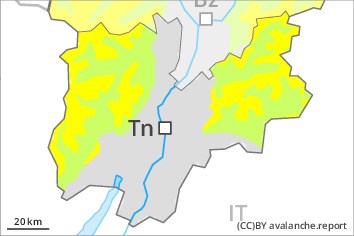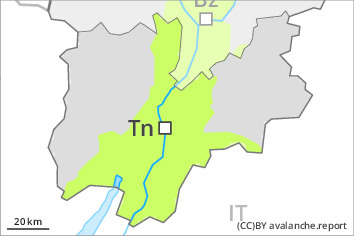
Danger level
 | 2300m |
|  |
|  | ||||
|  |
|  |

Weakly bonded old snow is to be evaluated critically.
In some places avalanches can be triggered in the weakly bonded old snow and reach medium size in isolated cases. The avalanche prone locations are to be found in particular on steep west to north to east facing slopes above approximately 2300 m and on steep sunny slopes above approximately 2600 m. Caution is to be exercised at transitions from a shallow to a deep snowpack. The fresh and somewhat older wind slabs are to be evaluated with care and prudence in particular on very steep shady slopes, in particular adjacent to ridgelines and in pass areas at elevated altitudes. As a consequence of warming during the day and solar radiation gliding avalanches are possible.
Snowpack
dp.1: deep persistent weak layer
Towards its base, the snowpack is faceted, especially on steep west, north and east facing slopes above approximately 2300 m, as well as on steep sunny slopes at elevated altitudes. The fresh wind slabs are lying on weak layers in particular on shady slopes at elevated altitudes.
Towards its surface, the snowpack is hard and its surface has a melt-freeze crust. This applies in particular on steep sunny slopes below approximately 2600 m.
Tendency
Weakly bonded old snow requires caution.



